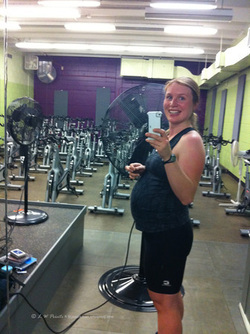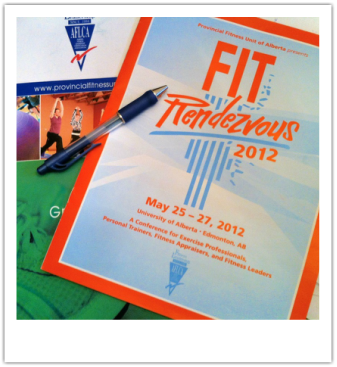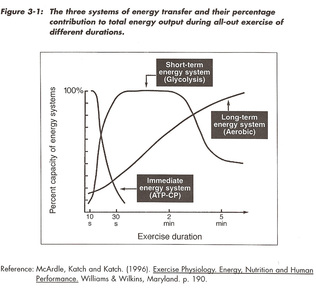|
Hockey you say? But it is June! The biggest night in Canadian sports happened on June 11 where the LA Kings won the Stanley Cup! This is the first time in their team’s franchise history. It was a blow out after the first period power play that lasted five minutes after a New Jersey Devil’s major misconduct. During the Kings’ power play, they scored three goals and set the tone of the game, taking them to victory. We sure love our game, so I'm dedicating this post to all hockey fans!
What would you do for a hockey inspired workout? Do you train hockey players on the bike? The bike is one of the best places to cross-train for our rink loving, hard hitting, puck shooting athletes. If you are not familiar with the game, here are the basics. With the exception of the goalie, each player plays the game in short bursts or "shifts" of players who are on "lines" consisting of defensemen and forward. At any time on the ice, there are two wingers, a centremen and two defensemen. Although some players are in more offensive and defensive roles, the key to victory is playing as a unit, both in the offensive zone (trying to score a goal) and in the defensive zone (trying to avoid a goal scored on their goalie)...meaning each player needs to constantly keep skating to stay with the play. Each shift typically last for about 45 seconds followed by recovery on the bench for a slightly longer period of time (i.e., 90 seconds). For this drill, to keep things moving I’m replicating a team with three forward lines; thus the recovery is two times the work. For a basic hockey inspired drills, try the following two drills: 1. A regular offensive shift: 45 second interval with 90 second recovery 2. An extended defensive shift defending a power play: 60 second interval with 2 minute recovery For more advanced drills, try the following: 1. A extended defensive shift capitalizing on a power play: 60 second interval including two 15 second “surges” with 2 minute recovery 2. A extended offensive shift capitalizing on a power play: 60 second interval including one 30 second “surge” with 2 minute recovery Have participants maintain their cadence between 80-100 rpm and up the resistance to mimic a RPE of 8-9/10 for the 45 or 60 seconds of work. For the recovery, reduce resistance and ride at a comfortable pace (RPE = 5/10). Surges are increased cadence and resistance for more challenge, which can be thought of as power and acceleration on the ice. Repeat each drill up to 4-6 times With hockey season wrapped up for the year, you may find athletes ready for off season training in your classes. But why not also let your regular participants explore the feeling of a hockey shift by working them hard during an indoor cycling session. With the NHL draft just wrapping up, it’s the perfect time to start thinking about training for next year. And as a side note, I was quite happy with the outcome on June 11! Way to go Jarret Stoll!
0 Comments
I wait every two years for the AFLCA's Fit Rendezvous in Edmonton. Nothing beats the energy of over 500 fitness leaders and trainers getting together to share their love and passion for group fitness. My conference started on the Friday night with the AFLCA trainers’ session on leadership. A future blog post will focus on some of its content but for this post I'd like to reflect on the indoor cycling sessions I attended. To save my legs and let's be honest, my backside, I didn't attend all the indoor cycling sessions, but I'd like to share with you what wisdom I took from the best of the best in indoor cycling instruction!
Effective Pedaling - Suzette O'Byrne The Competitive Team Ride: Indoor Team Training - Krista Popowych Ride One, Get One Free - Helen Vanderburg The Cyclist’s Toolbox: Tools and Techniques to Enhance the Indoor Ride - Suzette O'Byrne  Over the 40 weeks of my pregnancy, I diligently read about what was happening to my body and my baby week to week. As in all the books I read, pregnancy was always defined through the three trimesters. The first trimester is full of excitement and anticipation for what's to come (e.g., is it a boy or a girl?, when will I begin to show?). Sounds similar to a warm-up in an indoor cycling class? Your mind and body are preparing for the big task ahead! As the second trimester rolls around, you begin to do the 'heavy lifting'. The baby is growing and it soon becomes evident that your body is doing a lot of work. It is in high gear preparing for the baby who is rapidly growing. The second trimester can be seen as the bulk of the cardiovascular workout. Blood, sweat and tears. By the third trimester, you start to slow down (maybe even waddle a bit!) as you prepare for the end of your pregnancy. Just like the cool-down period of an indoor cycling class. Cue the relaxing music. It sure is needed in the last couple of weeks and minutes. Here are my top six lessons learned:
1. NAUSEA IS ALMOST CERTAIN. The majority of my girlfriends who are pregnant or have been pregnant can attest that nausea is almost certain. I was lucky...well, not really. I didn't realize that morning sickness isn't just in the morning. I had it most days, all day of weeks 7-15 of my pregnancy. It slowly declined as I grew bigger and bigger but some poor moms-to-be have it their whole pregnancy. What we put up with in pregnancy is also a common occurrence in an indoor cycling class. Start working in the anaerobic zone and you'd be sure to run into a bit of nausea. And in that situation too, we buckle down and pedal through it! Embrace your nausea! The reward at the end is worth it! 2. YOUR BODY IS AMAZING! As you are well aware, your body pushes the limits physiologically in an indoor cycling class. Pregnancy is no different except its working to make a healthy baby. Who knew I could teach indoor cycling classes to 36 weeks pregnant and ride my road bike on an indoor trainer a day before giving birth! And even more amazing is that after nine months of nesting in my body there is a healthy baby boy! Your body is amazing...and brilliant. Be kind to it. Listen to its cues (your body gives them!). Know your physiological limits and work within them. 3. GLOW AND SHINE. I like to think I glow when I ride. Have you ever heard of the saying - women glow, men perspire and horses sweat! This saying is thought to have originated from Victorian etiquette guides. And I am sure you've heard that pregnant women glow. Enjoy the glow! Even if you don't physically feel good, know that your glow (sweat) is apparent. Over the past four months I've been able to read bits and pieces about the indoor cycling world...during nap times and early morning feedings (got to love my iPhone!). Shannon Fable recently wrote a great review of what it takes to be an indoor cycling instructor. Take a peek at her blog post on the American Council of Exercise's Fitnovatives Blog.  To summarize, she highlights three main areas where to put your time and energy. Here's my brief input on each point. 1. Education Fitness leadership certification is essential to pursue when wanting to lead an indoor cycling class. In Alberta, the AFLCA is the leading certifying agency that top indoor cycling instructors go to for training. Also, the YMCA (a 'sister' to the AFLCA) provides quality education which can complement the certification requirements of the AFLCA designation. For additional certification and education, many of the indoor bike manufacturers/suppliers provide courses on how to teach indoor cycling classes such as Spinning™, Keiser, and Schwinn®. Most courses are offered outside of Canada but the rare one is available to take locally. 2. Slumdog Millionaire Vs Grease The focus of a good lesson plan (yes, I highly encourage a new lesson plan for each class!) is the HOW and the WHY. How are you leading participants in your class? Can you describe succinctly but with detail that you want participants to do? And then describe in basic terms why you want them to perform these certain drills? Shannon emphasizes the importance of content (i.e., drills and skills) rather than flashy, content poor "bells and whistles". 3. Success for Everyone Indoor cycling classes are appropriate for beginners, older adults, and athletes alike. The challenge is for the leader to adapt their planned workout for all those in attendance. How do you assess your participants and make sure their workout is appropriate? Shannon highlights the importance of coaching. Hands down - good coaching is essential to leading a group and having each individual participant be successful. Take some time to ponder Shannon's suggestions. They are key to hitting the mark as an indoor cycling instructor. I hope 2012 has welcomed you with health and happiness! My family has grown by one! I had my son, William (Liam) Robert Brown on Friday December 30 and we have been basking in his every move. With that being said, I will be away from my blog over the next couple months. I won't say exactly when I'll be back in the saddle, literally but will keep you abreast on my Facebook page as well. Please feel free to like the page to keep updated and to stay connected.
Wishing you a wonderful 2012! Lisa _ Fusion classes are becoming more and more prevalent in group exercise classes. Participants are looking to get the most bang for their buck and thus keen to try multiple modes together in one class. Recently, I spoke with Chelsea Coghill, a group exercise leader with the University of Alberta’s Campus Recreation, about her experience leading a fusion class.
How did you come with the idea to merge an indoor cycling and a yoga class? The idea was actually posed to me by the U of A Campus Recreation Group Exercise Coordinator when I was initially hired on to teach regular sessions. It was a format that had been tried in the past. The coordinator offered me the fusion class based on my cross training in indoor cycle and yoga only, knowing that there might be challenges in the event I needed a sub because at the time I would have been the only instructor trained in both formats! What do you think is the most beneficial aspect of a fusion class? I think the most beneficial aspects of fusion classes are BALANCE and VARIETY. In the cycle-yoga context, cyclists tend to prefer the high intensity and energetic demands of a spin class but may neglect the cool down and stretching components that are also really important. The yoga component offers an extended cool down and stretch along with calming and settling effects. We can’t be go-go-go all of the time, nor is it productive to always be still – BALANCE! Variety is also important to challenge the body, keep classes fun and interesting. It’s nice to follow a format but also allow for new things to be introduced. My favourite instructors are always the ones who hold their style and structure but continue to change things up – you just never know what might show up! Why does an indoor cycle-yoga fusion class work so well? To build a little bit on what I’ve already said, the spin-yoga fusion works well because of the complementary nature of the formats, which offers balance. For the indoor cyclists out there, they know that the cycling room can be a place of high energy and intensity – pounding hearts, heavy breathing, high speed, steep hills, burning muscles and maybe even sweat puddles under the bike! Avid cyclists know that muscles get tight and stiff, especially if time is not taken to thoroughly stretch out those working muscles. Adding the yoga component to cycle offers a greater opportunity to build length and flexibility in those areas of the body that get especially tight. It’s also a nice extension that offers participants an opportunity to fully absorb that endorphin release, allowing for additional calming and well being benefits. Describe a typical class. Generally, the class is about 80 minutes. The first half to two thirds (37-50 min) _ As comical as this above joke is, it really makes me think about spider webs as safety nets. What are the safety nets your facility uses or alternatively, what sort of safety nets do you put in place for yourself?
One of the many roles I have is an AFLCA Trainer of Leaders and I get to observe new AFLCA cycle designation candidates. Recently while observing a new instructor, she demonstrated great care and diligence. She had all participants complete an informed consent and a short medical history to inform her about any health concerns. Smart or what! What waiver does your facility use? Or do you have participants sign a waiver or what about informed consent? And then there are the physical activity readiness questionnaires, where do they fit in? Let’s review what each type of form will provide. Waiver: provide coverage for the facility and associated staff in case of an incident Informed Consent: form outlining the potential risks and benefits to participating in an exercise program PAR-Q: simple screening tool used for participants 15 to 69 years to determine if it is appropriate to start an exercise program PAR-MEDX: medical clearance form that must be provided to participants who answer questions positively on the PAR-Q. This form is completed by the participant’s physician. PAR-MEDX for pregnancy: medical clearance form that must be completed by all pregnant women by their physician before participating in exercise program These forms are all examples of safety nets. Ideally, having one or more of the forms completed by participants will demonstrate that you value your participants’ health and safety. As well, in some cases it may also protect you in an event of an incident. What other communications tools can you use to keep your participants safe? Do you ever ask who is a new participant at the beginning of class or inquire with participants about anyone have any medical conditions you should be aware of? These types of questions can provide some valuable verbal information about who is participating in your class and better enabling you to provide an appropriate class (i.e., suitable intensity, drill types, etc.). It is just another way to avoid having any incidents during your class. In the past couple years, “safety nets” have become more common such that U of A Campus Recreation program has now implemented waivers for all participants who partake in group fitness classes. Take a look at their form for an example. What are the ways you protect your participants and yourself in your indoor cycling classes? What is your “spider web”? Want to ‘pump’kin your cycle participants up with your creepy and frightening class? Try some of these drills and skills this Halloween! Ghostbuster Hill Drill Did you know that the word “ghost” is sung 30 times in the original Ghostbusters motion picture soundtrack song? Why not use this to your advantage and have your cycle participants increase resistance every time they hear the word “ghost”. Now for those who have a tension knob, participants can increase with small increments in the seated position each time they hear the word and stand when their revolutions drop below 50 rpm for a standing hill climb. For those with gears, why not have cycle participants climb two hills increasing from gear 5 to gear 20 (move to standing to reach the top of the hill), with 30 words, these lucky folks get a break dropping back to 5 before climbing again (apparently this hill has a dip near the top!). Both ways, the hill is just over four minutes total and I would encourage adding in downhill at the end to another classic Halloween song, Monster Mash! R.I.P. Power I found these really wicked Halloween glass tags with six themes – Trick, Treat, Bats, Witch, Haunted House, and Jack o'lantern (see above). I laminated them, place them on each bike and use them to perfectly divide participants into six groups. Power work has been a focus this term and thus, R.I.P. Power is the perfect way to put cycle participants into the grave! Split the group into 2 groups (Group 1: Trick, Treat, and Bats; Group 2: Witch, Haunted House, and Jack o'lantern). Group 1 start with seated power for 15 seconds while Group 2 rests. After the 15 seconds, the groups switch where it is Group 2’s turn to go. Continue to switch groups while increasing the duration of the seated power (i.e., 30, 45, 60, 90 seconds). If time permits, start again and steadily increase in duration with standing power. Need more inspiration? Check out October 2010’s post for another drill idea for sprints! Happy Halloween!
Since indoor cycling’s main focus is on cardiovascular conditioning, we need to use our knowledge of the body’s energy systems to our advantage. In three separate blog posts, I will review these energy systems and how we can focus on them during an indoor cycling class. Have you heard of Metabolic Training? Well, it’s the term used to describe workouts based on the body’s energy systems. So, we are talking about metabolic training with each post, but I did not want to start with too much terminology right of the bat! Let’s go back to basics. Our body is an amazing system for generating the energy that allows us to move. Adenosine Triphosphate (ATP) is a substance the body uses to store and move energy. Your cells break down ATP when they require energy. Depending on the energy system, ATP is either formed from the breakdown of glucose with oxygen (aerobic) or without oxygen (anaerobic). This first post will focus on the aerobic energy system. I like to think of the aerobic energy system (sometimes called aerobic respiration) as the endurance system. Definitely something that is important for us within an indoor cycling class. Our bodies tend to tap into the aerobic energy system after three minutes of exercise (the systems used in the first few minutes will be more the subject of my next posts) and use it as the primary means of energy over the long haul. The aerobic energy system is able to generate large amounts of ATP but is also relatively sluggish compared to other energy systems. It takes a while to kick in. This is because it involves many steps and continuously requires oxygen and other nutrients. As long as oxygen is available, a muscle cell will continue to use the aerobic energy system as much as possible to contract and relax muscle fibers. Thus, prolonged exercise where the demand on your body does not exceed the ability of this system to provide energy will use the aerobic energy system almost exclusively. In fact, in well-conditioned individuals (like yourself!), the aerobic energy system alone will provide the energy to continue for many hours at a low to moderate intensity!
So how do we apply our knowledge of the aerobic energy system to our drills? Well, let’s look at the appropriate work to rest ratio, which is the time it takes our bodies to recovery from aerobic work. For aerobic work, we must design sessions with the ratios 1:1 (equal parts work and rest) to 1:0.5 (work double the amount of the time we rest). I am very fortunate with my work as an AFLCA Trainer of Fitness Leader to meet both new and veteran indoor cycling instructors. In my most recent AFLCA Cycle Designation Course, one such participant shared with me a recent article she wrote. Lisa Wojna is a journalist with a fitness column in the Leduc Representative and she shared with me (and now you) this great article on visualization. Take a read and get inspired! Visualize your way to a healthier you |
Workman's Cycle Drills & Skills
Enjoy some of my favorite cycle workout drills either in a cycle class or on your own bike at home! Archives
September 2013
Categories
All
|
Edmonton, Alberta







 RSS Feed
RSS Feed